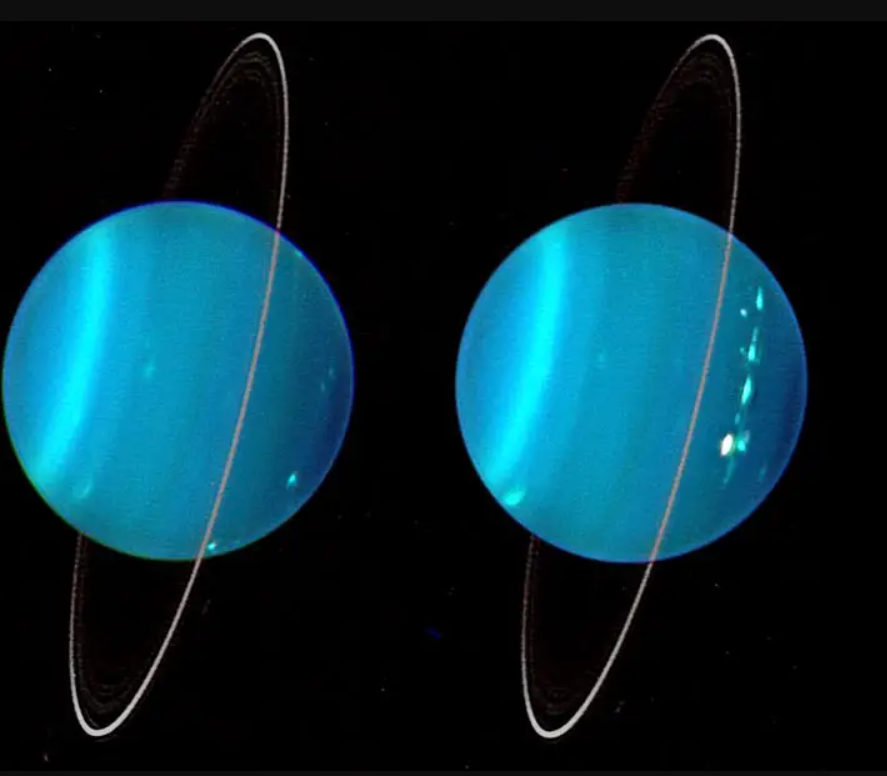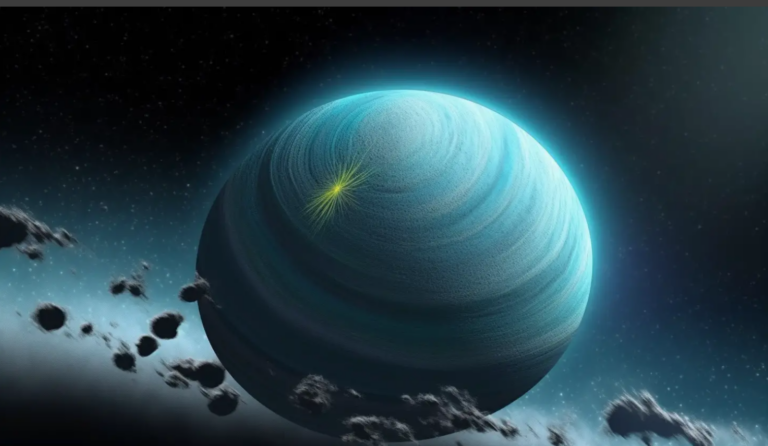Uranus Has Suffered A Pounding So Hard That it Got Tilted
A team of researchers has discovered that Uranus was subject to a colossal pounding by an object twice the size of Earth
The seventh planet from the sun, Uranus, has long been an enigma for astronomers and scientists alike. With its unusual tilt and peculiar characteristics, this gas giant has raised countless questions about its formation and history. Recent studies suggest that Uranus has suffered a colossal pounding, which might explain its unique features. This article delves into the details of this extraordinary event and its implications on our understanding of the solar system.
The Colossal Pounding: Unraveling Uranus’ Past
Scientists have hypothesized that Uranus experienced a massive impact, possibly with an object twice the size of Earth, which led to its extreme axial tilt of 98 degrees. This colossal pounding would have significantly altered the planet’s rotation, causing it to spin on its side. Such a violent event would have had lasting effects on the planet’s atmosphere, internal structure, and even its magnetic field.
A Tilted World: The Effects of Uranus’ Pounding
The massive impact that Uranus endured not only knocked it on its side but also left a lasting mark on the planet’s characteristics. The tilt affects the weather patterns on Uranus, leading to extreme seasonal variations. The planet’s magnetic field is also unique, with the magnetic poles located far from the geographic poles. This peculiar magnetic field is believed to be a result of the catastrophic pounding Uranus experienced in its past.

Uranus’ Moons: Another Clue to the Pounding
Uranus has 27 known moons, and their orbits provide further evidence of the planet’s violent history. Many of these moons have irregular and highly inclined orbits, suggesting that they were significantly disturbed by the colossal pounding event. This finding supports the theory that Uranus’ unique features are a direct result of the massive impact it suffered.
A Rare Glimpse into Planetary Formation: Uranus as a Case Study
The colossal pounding theory sheds light on the chaotic and violent nature of planetary formation. Uranus serves as a prime example of how cataclysmic events can shape and define a planet’s characteristics. The study of Uranus and its violent history contributes to our understanding of the early solar system and the processes that led to the formation of planets and their features.
Exploring Uranus: The Challenges and Future Prospects
Uranus remains one of the least explored planets in our solar system. Its extreme distance from the sun and the harsh conditions on the planet make it a challenging destination for space missions. However, the fascinating insights gained from studying Uranus’ colossal pounding have sparked interest in further exploration. Future missions to Uranus could provide valuable information about the planet’s history, its unusual features, and the consequences of the massive impact.

Uranus’ Pounding and Its Implications for Exoplanetary Research
The study of Uranus’ pounding not only enriches our understanding of our own solar system but also has implications for the study of exoplanets – planets orbiting stars outside our solar system. The knowledge gained from studying Uranus can help scientists identify similar events in the formation and evolution of exoplanets, providing insights into the diversity of planetary systems throughout the universe.
Conclusion: The Enduring Mystery of Uranus
While the colossal pounding theory has provided valuable insights into Uranus’ unique features and history, many questions about the planet still remain unanswered. As we continue to explore and study this enigmatic world, new discoveries will undoubtedly reshape our understanding of Uranus and its place in the cosmic landscape. The story of Uranus’ pounding serves as a powerful reminder of the dynamic and ever-evolving nature of our universe.
Reference(s): Research Paper
Do not forget to share your opinion with us to provide you with the best posts !




0 Comments